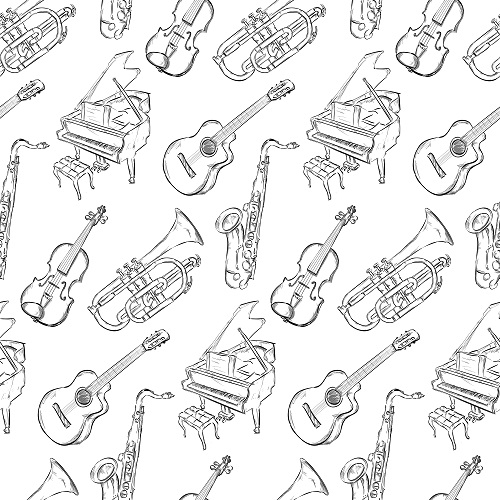Ear Training 2
Perfect Pitch vs. Relative Pitch
I’m sure you’ve heard other musicians talk about how some musicians have what’s called Perfect Pitch. It’s the ability to name the letter of a note just by hearing it. People with Perfect Pitch can tell you instantly what that note is 100% of the time. Although it’s not totally clear why some musicians have this talent, in my experience this gift often is seen in people who played a well-tuned instrument (almost always piano) from a very young age. While Perfect Pitch can be a helpful tool for a musician, it’s definitely not necessary to become a world-class player. What you do need to learn, though, is a good sense of Relative Pitch.
Relative Pitch is the ability to accurately hear the distance between two notes. We call these “intervals”.
Intervals
Intervals are named by their location in a scale in relation to the first note or root of the scale. Let’s use the C major scale as an example.
C D E F G A B C
1 2 3 4 5 6 7 8
While there is technically no distance between two of the same notes, we call 1 to 1 a unison.
The interval between 1 and 2 is called a major second. We also often call this small interval a whole step. See the Music Theory lesson on scales!
Between 1 and 3 is a major third, 1 and 4 is a perfect fourth, 1 and 5 is a perfect fifth, 1 and 6 is a major sixth, 1 and 7 is a major seventh, and between 1 and 8 is an octave.
We use major and perfect as there are also other intervals that correspond to the notes we use in different scales and chromatic melodies that are found in between the notes of the major scale. We’ll discuss this more in the next post.
Exercises
An exercise you can do with a teacher is to take a few intervals (try starting with unison, major third, perfect fifth, and octave) and have them play each interval (in the same key) randomly and see if you can guess. If you’re wrong, the teacher will play the interval again so you can listen to it and try to memorize it. One great way to learn intervals is for the teacher to find a song that you know by heart to associate the interval with (Twinkle, Twinkle, Little Star begins first with a unison then a perfect fifth!) The next time you hear the interval, it’s likely you will hear this melody and know right away what to call it!
Since we usually only see our teacher once a week, the best way to practice interval training on your own is to find a great ear training app! I’m not going to suggest any particular one as there are many out there, just search for Ear Training and choose one! Look specifically that it has interval training exercises. Most of them do. Practice a little everyday and your ears will thank you!

